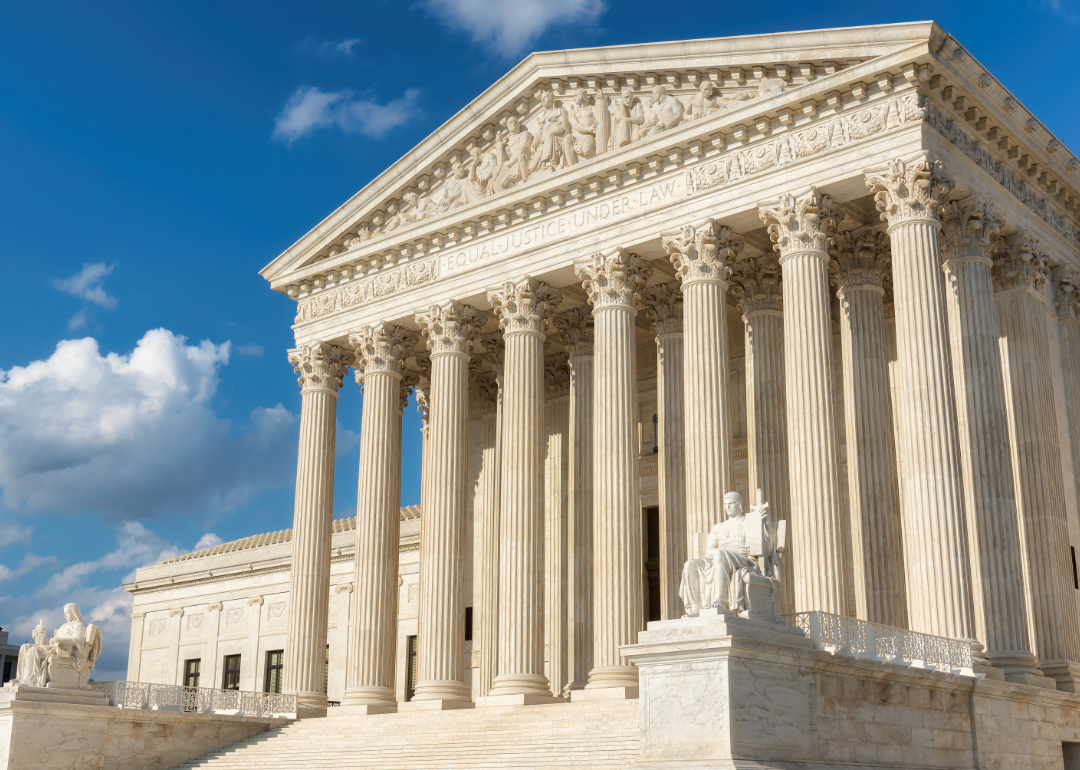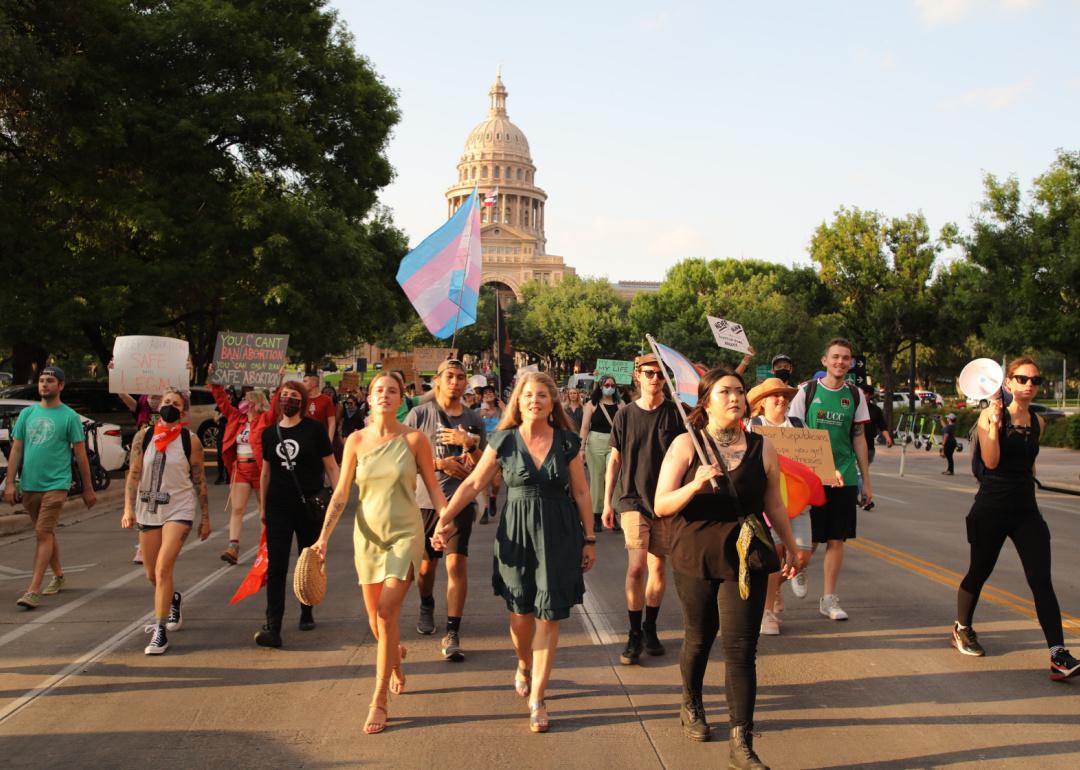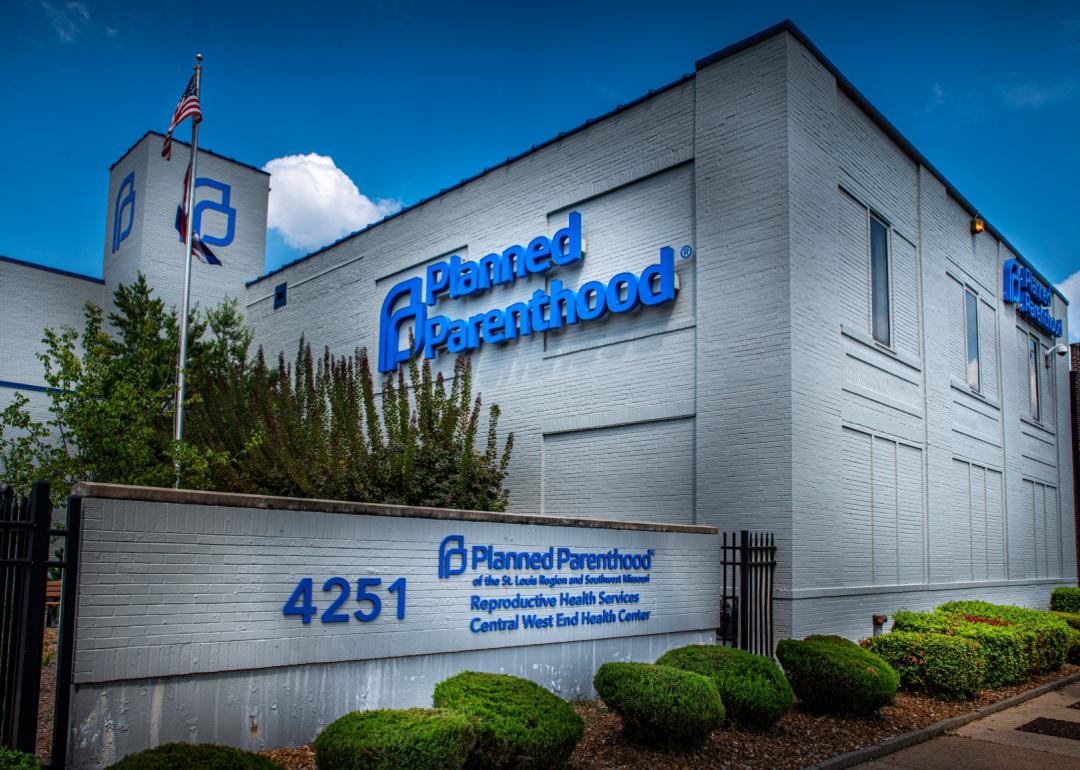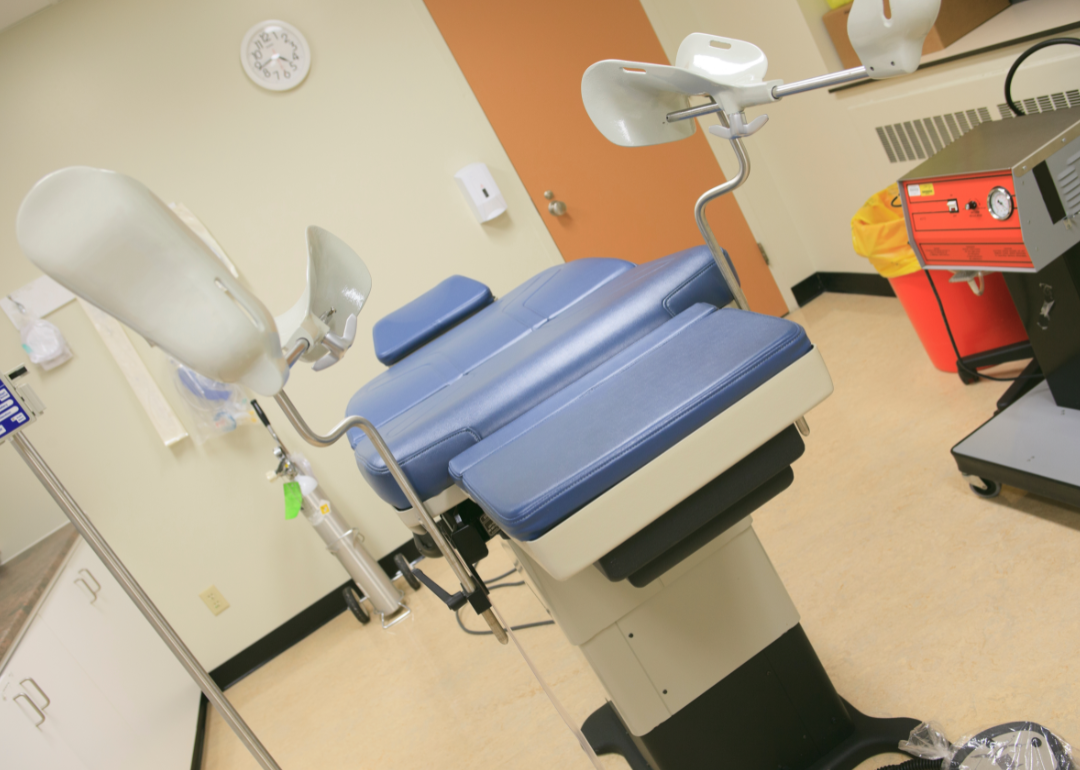5 changes to reproductive health care in the US since Roe's reversal

Canva
5 changes to reproductive health care in the US since Roe’s reversal
Photo shows the exterior of the Supreme Court building.
The federal fight for reproductive rights began in 1965 when the Supreme Court ruled against states trying to prohibit the prescription, sale, or use of contraceptives (Griswold v. Connecticut). Since then, 22 cases related to reproductive rights have been heard and ruled on by the Supreme Court. These cases have included discussions about whether federal funds can be used for abortion procedures, how information about abortions and contraceptive pills can be disseminated, and whether both biological parents must be notified and consent to an abortion before it occurs.
Those 22 cases include Dobbs v. Jackson Women’s Health Organization, which overturned the decision made in Roe v. Wade that protected the right to an abortion under the umbrella of a right to privacy. In the wake of this decision, Stacker investigated how reproductive health care has changed in the U.S. since the reversal of Roe v. Wade, using various news and government sources.
![]()

Vic Hinterlang // Shutterstock
24 states have banned or significantly restricted abortion access, while some states have joined forces to create reproductive rights havens
Photo shows people marching for abortion rights, holding signs
There was significant movement in nearly half of the states to ban or greatly restrict abortions after Roe fell, especially in the South. Many of these bans fell under the category of trigger bans, which were laws put into place before the Supreme Court made its decision on the Dobbs case, but that could not be enacted until after federal abortion protections were officially lifted. Some states that have enforced trigger bans include Texas, Idaho, and Tennessee.
On the other hand, some states have moved to protect existing abortion access or even expanded the resources provided to those in need of contraceptive care. These states are primarily concentrated in the West and Northeast and include California, Illinois, and New York. California, Oregon, and Washington state have joined forces to make a West Coast-wide safe haven for those seeking abortions.

P. Rozenski // Shutterstock
Both state and federal legislatures have moved to defund Planned Parenthood resources
Photo shows the exterior of a Planned Parenthood building
In January 2023, Rep. Michelle Fischbach proposed the Defund Planned Parenthood Act, which would prohibit any federal mandatory or discretionary funds from being allocated to Planned Parenthood unless the organization certifies that it will not perform abortions. In tandem with this legislation, Fischbach also introduced the Protecting Life and Taxpayers Act, which would require all federally funded organizations to make the same commitment. Fischbach’s proposals are not anomalies—they have been accompanied by proposals from Reps. Bob Good, Lauren Boebert, and others.
Though the strategy of defunding Planned Parenthood on a state-by-state basis isn’t new, there has been a resurgence in conservative lawmakers’ efforts to pass such legislation. Arkansas, Mississippi, Missouri, and Texas have all passed legislation that withholds state funding from Planned Parenthood in some way. These actions could have significant negative consequences on reproductive and sexual health care access including not only access to abortions but also access to contraceptives, breast and cervical cancer screenings, and other pregnancy-related care.

Canva
More than 60 clinics ceased abortion services, and abortion training for medical professionals may also become restricted
Photo shows the interior of a doctor’s office exam room
As of Oct. 2, 2022, 100 days after the Supreme Court’s ruling on Dobbs, 66 of 79 clinics across 15 states had halted their abortion services, according to an analysis by the Guttmacher Institute. The remaining 13 clinics are all concentrated in a single state—Georgia—leaving the other 14 with no clinics offering abortion care. It’s estimated that more than 22 million people who can become pregnant live in the 14 states that now no longer provide access to abortions without crossing state lines. In those 14 states, nearly 126,000 abortions were performed in 2020.
The Association of American Medical Colleges also warned that repealing Roe will make it more difficult for new doctors to receive proper training in abortion care. However, this doesn’t just impact how students may be taught to perform abortions. Pregnant people who undergo miscarriages almost always need the same medical treatment as patients who receive abortions, and people in both cases benefit similarly from counseling. This restriction of curricula could manifest in classroom content as well as in reduced opportunities for students to train in how to carry out these procedures safely, potentially leading them to harm future patients.

May Chanikran // Shutterstock
At-home abortion pills have come under fire, while mail-order birth control has boomed
Photo shows a closeup of someone pouring pills out of a pill bottle and another person sitting nearby holding a glass of water
On March 15, 2023, in Texas, federal Judge Matthew Kacsmaryk heard a case filed by the Alliance Defending Freedom challenging the Food and Drug Administration’s approval of medical abortion pills, specifically those containing mifepristone. The drug is typically taken as the first in a two-part sequence that also includes misoprostol. The Alliance Defending Freedom was one of the organizations that supported the Mississippi case that eventually led to the Supreme Court’s Dobbs v. Jackson decision, overturning Roe v. Wade. On April 21, 2023, the Supreme Court blocked the ruling by Kacsmaryk and upheld the FDA approval of mifeprestone for use in medical abortions.
Hey Jane, a telemedicine startup specializing in providing medical abortion pills, reported that traffic on its site increased more than tenfold directly after the Dobbs decision. Similar trends were observed by other abortion pill providers, such as Plan C. Medication abortions account for more than half of all abortions (53%) in the U.S., according to the Guttmacher Institute.

Canva
Inequities in reproductive care access have deepened
Close-up photo showing a hand holding up a “does not equal” sign
Even before Roe was overturned, pregnant people of color faced a pregnancy mortality rate at least twice as high as pregnant white people. Abortion rates have historically been higher among communities of color, which is one reason why abortion bans have caused a greater chasm in reproductive care inequality. Underlying and systemic social inequities like reduced access to financial resources among women of color also exacerbate the divide.
Additionally, reduced access to abortions is not the only reproductive care at risk. Women of color are more likely to have an ectopic pregnancy—where a fertilized egg implants itself outside the uterus— miscarry, or experience infertility. People with these conditions require care similar to the care abortion recipients require, which is more difficult or impossible for people of color to access in the wake of Dobbs.
